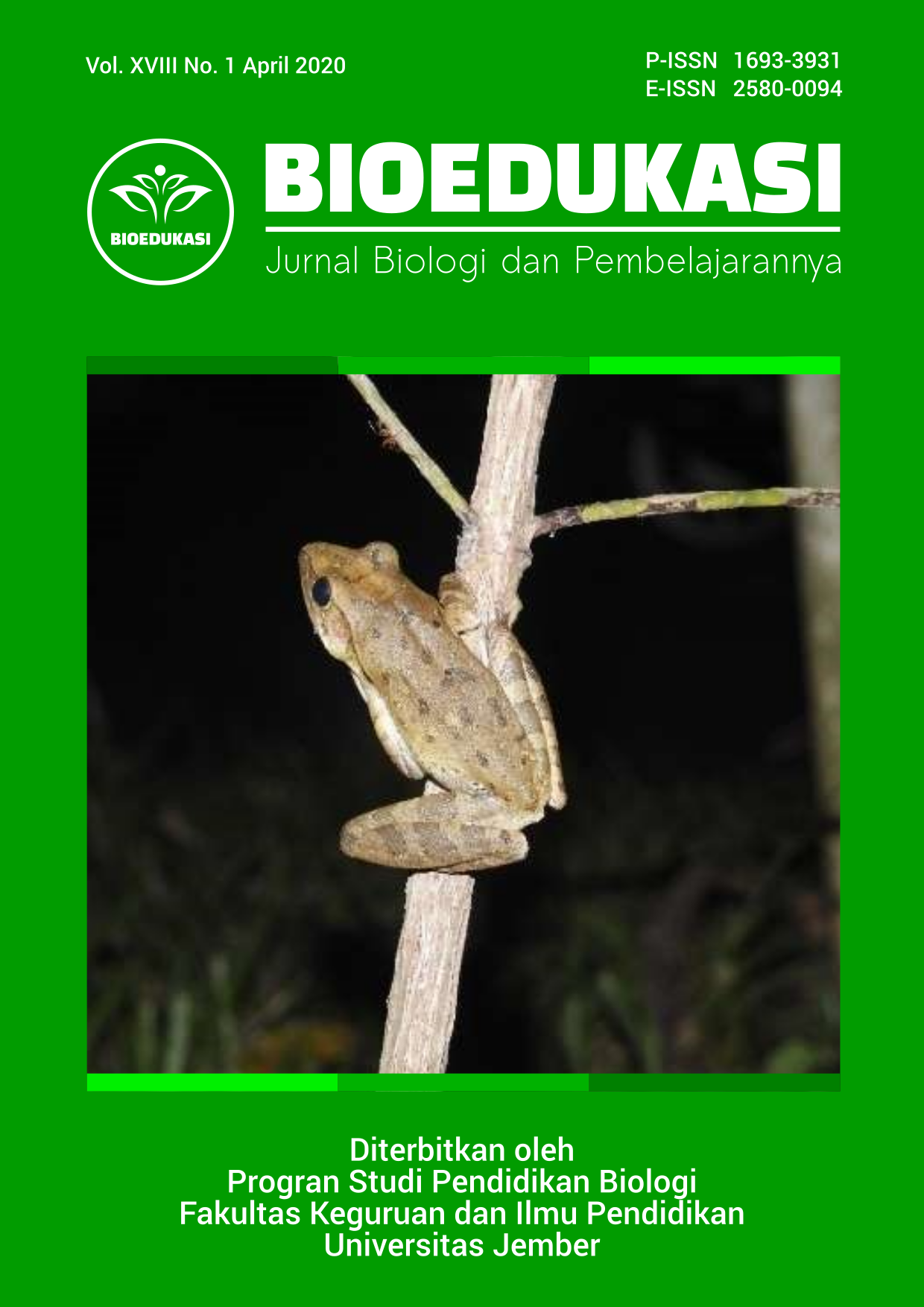Ordo Anura in Jember University
Abstract
Some types of Anura have a narrow range of environmental parameters, so they can’t survive in environments where natural conditions change dramatically. Therefore, Anura has the potential to be a good environmental bioindicator. The purpose of this research is to identify the types of Anura found at University of Jember. This research is included in the survey research using direct observation method VES (Visual Encounter Survey). Observations were made of adult members of the Anura Order. Data taken includes species characteristics, abiotic factors such as temperature and humidity, and activity when found. The results showed at Jember University there were 4 species from 3 family members of the Anura order, namely Duttaphrynus melanostictus Schneider, 1799 (Bufonidae), Polypedates leucomystax Gravenhorst, 1829 (Rhacophoridae), Fejervarya limnocharis Gravenhorst, 1829 (Dicroglossidae), and Occidozyga sumatrana Peters, 1877 (Dicroglossidae). The species most commonly found is Duttaphrynus melanostictus which is found in almost every observation location. Environmental factors that support the existence of Anura members in that location are temperature and humidity, and environmental conditions.

This work is licensed under a Creative Commons Attribution-NonCommercial-NoDerivatives 4.0 International License.









 https://orcid.org/0000-0003-1920-0515
https://orcid.org/0000-0003-1920-0515
